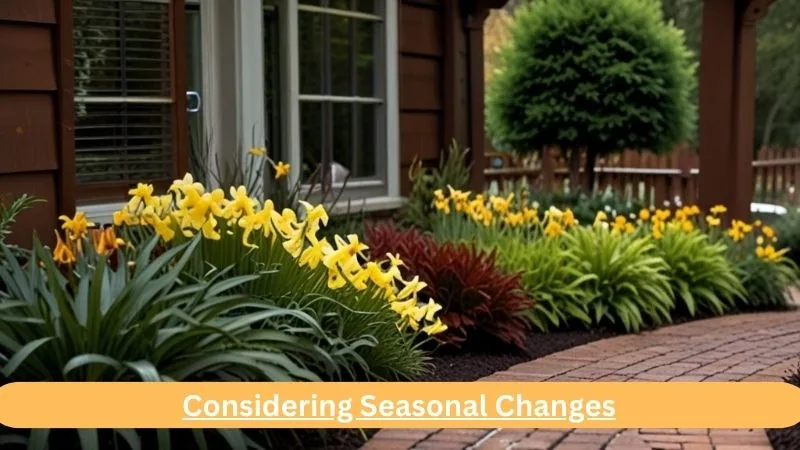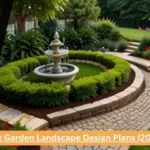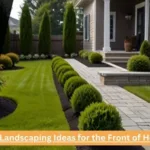Best Layout Landscape Design Plans in 2024
Introduction:
Landscape design is both an art and a science that combines creativity with functionality to transform outdoor spaces into beautiful and functional spaces. Creating a good design perspective is important to ensure the result is as expected. Below is a detailed guide that outlines the key points for creating a successful implementation plan.
Understanding Site Analysis:
The first step in landscape design is determining the right location. This involves analyzing the existing conditions of the site, including soil type, topography, existing vegetation, climate, and microclimate. Soil analysis is important because it determines what kinds of plants will thrive. Topography involves understanding the contours, slopes, and drainage patterns of the land [Layout Landscape Design Plans]. Understanding the climate and microclimate (the changes in different areas of a site) can assist you in choosing plants that do well under those specific conditions. Also, paying attention to existing structures, power lines, and other physical equipment can help you plan your installation well.
Establishing Objectives and Themes:

It is important to determine the main purpose and content of landscape design. Whether the goal is a relaxing retreat, a beautiful garden, or an outdoor entertainment area, having a clear vision can help guide the design process. The content can range from patterns and patterns to natural and organic. For example, a landscape garden might feature designs, geometric shapes, and manicured lawns, while a natural theme might include walking paths, native plants, and significant biodiversity.
Also Read: Best Garden Landscape Design Plans (2024)
Functional Zones and Space Allocation:
A well-developed facility must have efficient facilities. These areas will include recreation, dining, gardening, and relaxation areas. Proper allocation of space ensures that each area serves its purpose without becoming overcrowded. For example, the backyard can be divided into a patio for dining, a grassy area for children to play, garden beds for growing vegetables, and nooks for reading or thinking. Each area should be easily accessible and flow seamlessly into the next, creating harmony and cohesive environment.
Creating a Base Plan:

Basic Planning is the basis of landscape design. It contains an outline of the site, including existing structures, boundaries, and key features. The plan provides the information that will be used for the job and helps in planning and organizing the content well [Layout Landscape Design Plans]. Tools such as graph paper, landscape design software, or professional CAD programs can be used to create appropriate and detailed plans. Basic plans should include all existing conditions and measures to ensure the accuracy of the design process.
Selecting Plant Materials:
It is important to choose the right plants in landscape design. Important factors to consider include plant growth, seasonal interest, color, texture, and care. Native plants are often loved for their versatility and low maintenance. To enhance the landscape, choose a variety of plants that bloom at different times of the year. It’s also important to consider the size of your plants to avoid overcrowding and to give each plant enough room to thrive.
Incorporating Hardscaping Elements:
Hardscape refers to the non-vegetated aspects of landscaping, such as paths, patios, retaining walls, and water features. These structures add function and beauty by creating a balance between soft landscape (urban) and hard landscape. For example, a well-designed courtyard can provide a comfortable space for outdoor dining and entertaining, while paths can direct movement and define different areas in the landscape. Retaining walls can help control slopes and erosion, and water features such as fountains or ponds can add tranquility and attract wildlife.
Water Management and Irrigation:
Good water management is important for the security of the region. Ensuring efficient use of water, considering solutions, and implementing water conservation measures such as rain gardens or dry land construction are important issues to address. Watering systems should be tailored to the specific needs of your plants to ensure each plant receives the correct amount of water [Layout Landscape Design Plans]. Barrier solutions such as French drains or ditches can help prevent water and erosion. Xeriscaping uses drought-tolerant plants and effective irrigation techniques that reduce water use.
Lighting Design:
Landscape lighting enhances the beauty and functionality of outdoor spaces at night. It includes light output to highlight important features, increase security, and create an atmosphere. Options include:
1) Floodlights to illuminate walkways
2) Spotlights for trees or architectural features
3) Additional string lights for festive outdoor entertaining areas
Planned lighting can enhance the usability of your outdoor space and create an inviting atmosphere.
Designing for Sustainability:
Sustainable Landscape Design focuses on creating safe and productive outdoor spaces. This includes using drought-tolerant plants, reducing weeds, recycling materials, and supporting biodiversity. Sustainable practices minimize environmental impact and maintenance costs. For example, incorporating native plants reduces the need for fertilizers and pesticides, while using recycled or local materials for hardscapes reduces the carbon footprint. Creating habitat for local wildlife and using organic gardening practices also contribute to sustainability.
Considering Seasonal Changes:

Successful landscaping takes time to consider. Plan for year-round interest by combining plants with different bloom times, leaf colors, and textures to ensure your landscape is beautiful year-round. As an example, flowers and daffodils in the spring provide early color, summer perennials like coneflowers and daylilies produce vibrant blooms, fall foliage adds rich hues, and evergreens offer structure and foliage in winter. Additionally, incorporating elements such as ornamental grasses and bark textures can add interest to the holiday season.
Implementing the Design:
When the design is completed, the first phase begins. This includes site preparation, planting, and installation of hardscape elements. It is important to follow the specific design to achieve the desired results [Layout Landscape Design Plans]. Proper soil preparation, including soil amendment and leveling, provides a healthy foundation for your plants. Plantings should be done according to the plan, paying attention to spacing, depth, and direction. For durability and longevity, hardscape elements must be installed with precision and care.
Conclusion:
In summary, creating a landscape design plan requires a comprehensive plan that includes a good location analysis, a clear goal, and consideration of area distribution. It is possible to design a stunning and sustainable landscape by choosing the right plants, installing hardscaping, and practicing good water management. Proper lighting design and seasonal planning can enhance the appeal of your landscape year-round [Layout Landscape Design Plans]. Finally, maintain and maintain it regularly to ensure the longevity and beauty of the design. Together, these steps transform the outdoor space into a harmonious, functional, and durable space.
Layout Landscape Design Plans – FAQs:
Q1. What makes a successful landscape?
Ans: A good building should be both functional and visually pleasing. Signs of good landscaping are usually clear walkways and trees with no broken or damaged branches.
Q2. What is the best paper for landscape design?
Ans: Vellum Landscape designers often draw on a strong paper called vellum and then print on bond paper, the same paper most computer printers use. Drawing paper can help beginners make accurate measurements and make it easier to calculate the area of enclosed spaces.
Q3. What is the purpose of landscaping?
Ans: Landscape plays an important role in today’s world. We use landscaping for our homes, workplaces, and beauty. We use it to create freedom and comfort. It also protects the environment.





Leave a Reply